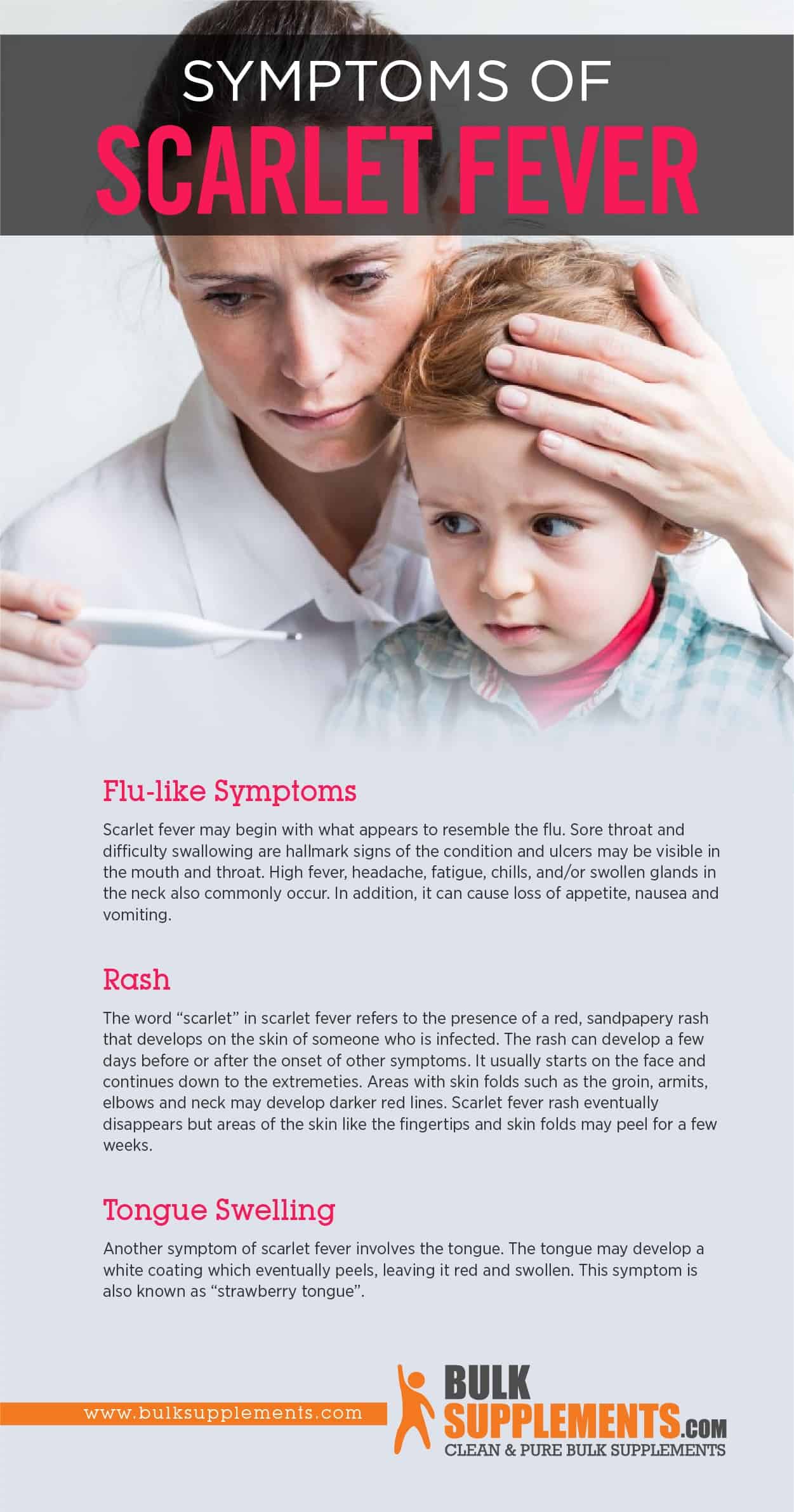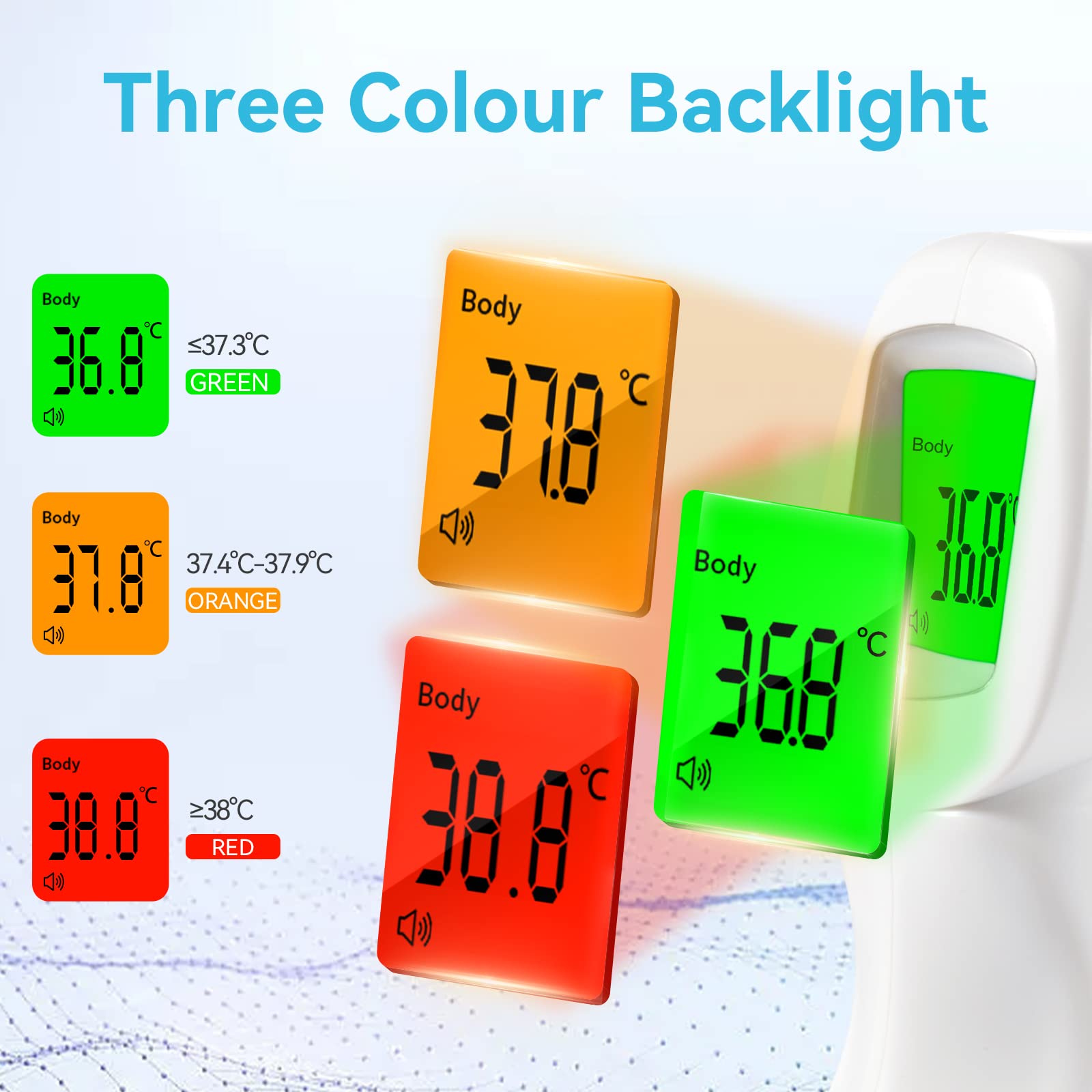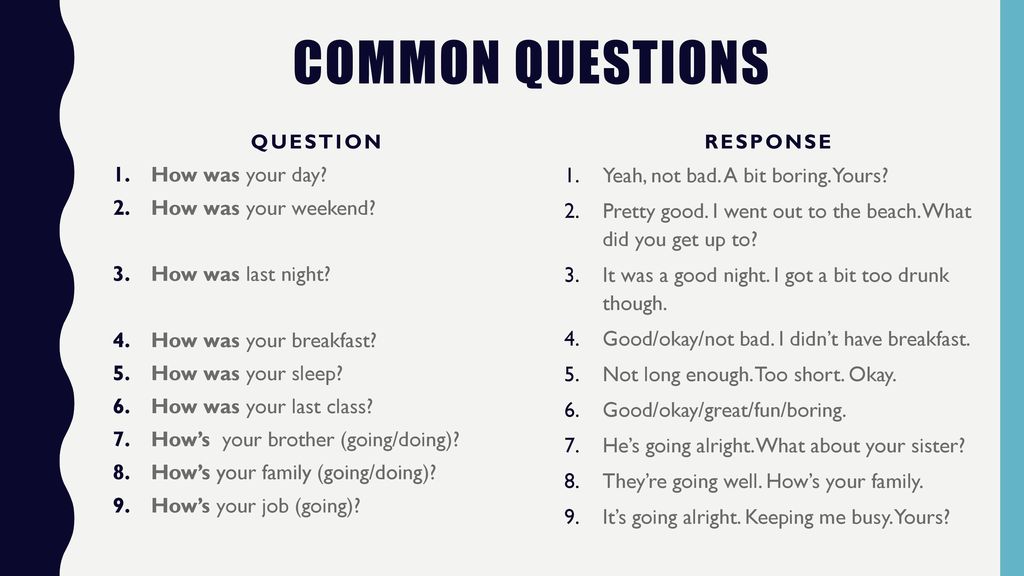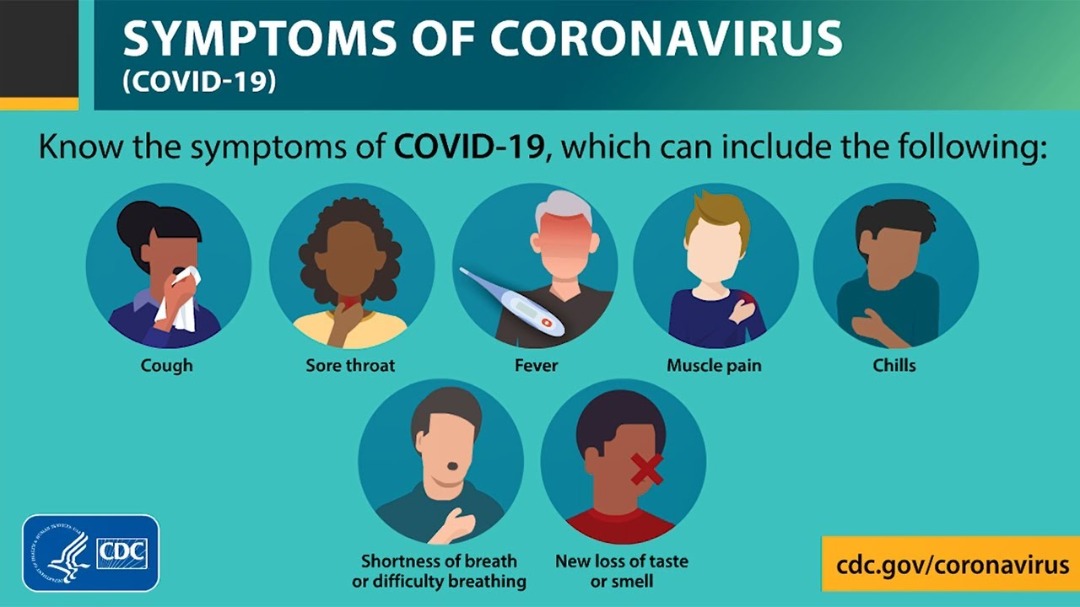How bad can a fever get. Understanding Fever: Causes, Symptoms, and When to Seek Medical Help
How high can a fever get before it becomes dangerous. What are the different levels of fever severity. When should you worry about a fever and seek medical attention. What are common causes and symptoms of fever. How can you treat a fever at home.
What Defines a Fever and How High Can It Go?
Fever is one of the body’s most effective defense mechanisms against infection. It occurs when the body raises its internal temperature to combat invading pathogens like viruses or bacteria. But how high can a fever actually get before it becomes concerning?
A normal body temperature typically averages around 98.6°F (37°C), though this can vary slightly from person to person and fluctuate throughout the day. Medically speaking, a fever is defined as a body temperature of 100.4°F (38°C) or higher.
Fevers can be categorized into different levels of severity:
- Low-grade fever: 99.1°F to 100.4°F (37.3°C to 38°C)
- Moderate-grade fever: 100.6°F to 102.2°F (38.1°C to 39°C)
- High-grade fever: 102.4°F to 105.8°F (39.1°C to 41°C)
While fevers can occasionally spike higher, temperatures above 105.8°F (41°C) are extremely rare and potentially life-threatening. At this point, the risk of complications like seizures or brain damage increases significantly.

When Should You Be Concerned About a Fever?
For most healthy adults, a low-grade or even moderate fever is not immediately cause for alarm. However, certain circumstances warrant prompt medical attention. You should contact a healthcare provider if:
- Your fever exceeds 104°F (40°C)
- The fever persists for more than 3 days
- You experience severe symptoms alongside the fever
Seek emergency medical care if a fever is accompanied by any of these symptoms:
- Seizures or loss of consciousness
- Confusion or altered mental state
- Stiff neck
- Difficulty breathing
- Severe pain in any part of the body
- Swelling or inflammation
- Unusual vaginal discharge or pain during urination
Common Causes of Fever: Beyond Infections
While infections are the most frequent culprit behind fevers, they’re not the only possible cause. Other conditions that can trigger an elevated body temperature include:
- Inflammatory diseases like rheumatoid arthritis
- Reactions to medications or vaccines
- Certain types of cancer
- Heat exhaustion
- Hormonal imbalances
Understanding the underlying cause of a fever is crucial for proper treatment and management. Healthcare providers will consider various factors when diagnosing the source of a fever, including:

- Associated symptoms (e.g., coughing, abdominal pain, vomiting)
- Recent medical procedures or injuries
- New medications or vaccinations
- Recent travel history, especially to foreign countries
Recognizing Fever Symptoms: More Than Just High Temperature
While an elevated body temperature is the primary indicator of a fever, it often comes with a constellation of other symptoms. Being aware of these can help you better assess the severity of your condition:
- Sweating or chills (sometimes alternating)
- Headache
- Muscle aches
- Loss of appetite
- Fatigue or weakness
- Skin rash
- Restlessness
In cases of very high fever, more severe symptoms may manifest:
- Confusion
- Extreme drowsiness
- Irritability
- Seizures (particularly in young children)
Can fever symptoms vary based on the underlying cause?
Indeed, the specific combination and intensity of symptoms can offer clues about the fever’s origin. For instance, a fever accompanied by a sore throat and runny nose might suggest a viral upper respiratory infection, while fever with localized pain and swelling could indicate a bacterial infection.

Home Remedies: Managing Fever Safely and Effectively
For most mild to moderate fevers, home treatment can provide relief and support the body’s natural healing process. Here are some safe and effective strategies for managing a fever at home:
- Stay hydrated: Drink plenty of fluids to replace those lost through sweating and prevent dehydration.
- Rest: Allow your body the energy it needs to fight off the underlying cause of the fever.
- Eat light: Opt for easily digestible foods if you have an appetite.
- Use over-the-counter medications: Acetaminophen, ibuprofen, or naproxen can help reduce fever and alleviate discomfort.
- Apply cool compresses: Place damp washcloths on the forehead and wrists to help lower body temperature.
- Take a lukewarm bath: This can help cool the body, but avoid cold water as it can cause shivering and potentially raise body temperature.
Is it necessary to “sweat out” a fever?
Contrary to popular belief, there’s no need to bundle up and try to “sweat out” a fever. This approach can actually make you more uncomfortable and potentially increase your body temperature. Instead, dress in light, breathable clothing and keep your environment at a comfortable temperature.

When to Visit the ER: Identifying Fever Emergencies
While most fevers can be managed at home, certain situations require immediate medical attention. It’s crucial to recognize the signs of a potentially serious condition. You should go to the emergency room if you experience a fever along with:
- Severe headache or neck stiffness
- Persistent vomiting or diarrhea
- Signs of dehydration (dark urine, dry mouth, dizziness)
- Difficulty breathing or chest pain
- Unusual skin rashes, especially if they’re spreading quickly
- Seizures or loss of consciousness
- Severe abdominal pain
- Confusion or inability to stay awake
Additionally, certain groups of people should be more cautious with fevers and seek medical attention sooner:
- Infants under 3 months with any fever
- People with compromised immune systems
- Those with chronic medical conditions
- Recent travelers to areas with endemic infectious diseases
How quickly should you expect treatment in the ER for a fever?
Emergency rooms typically triage patients based on the severity of their condition. A high fever combined with concerning symptoms will usually be prioritized for rapid assessment and treatment. The ER staff will work to identify the cause of the fever and provide appropriate interventions, which may include intravenous fluids, medications, or further diagnostic tests.

Fever in Special Populations: Unique Considerations
While the general guidelines for fever management apply to most adults, certain groups require special attention and potentially different approaches:
Infants and Young Children
Fever in infants and young children can be particularly concerning due to their developing immune systems and inability to communicate symptoms effectively. Parents should be aware of the following:
- Any fever in infants under 3 months warrants immediate medical attention
- For older infants and toddlers, fever accompanied by lethargy, reduced feeding, or signs of dehydration needs prompt evaluation
- Febrile seizures, while generally not harmful, can be frightening and may require medical assessment
Elderly Individuals
Older adults may not always present with typical fever symptoms. Important considerations include:
- Baseline temperatures in the elderly tend to be lower, so even a slight elevation could indicate infection
- Confusion or changes in mental status may be the primary sign of fever in some older adults
- Chronic health conditions can complicate fever management and increase the risk of complications
Immunocompromised Patients
People with weakened immune systems, such as those undergoing chemotherapy or living with HIV, require special attention when it comes to fevers:

- Even a low-grade fever can signify a serious infection in immunocompromised individuals
- Prompt medical evaluation is crucial to prevent rapid progression of infections
- Treatment approaches may differ to account for the compromised immune response
How do fever management strategies differ for these special populations?
For these groups, fever management often involves more cautious monitoring and earlier intervention. Healthcare providers may recommend lower thresholds for seeking medical attention and may employ more aggressive treatment strategies to prevent complications. It’s essential for caregivers and patients in these categories to have clear guidelines from their healthcare team on how to respond to fevers.
The Role of Fever in Immunity: Friend or Foe?
While fever can be uncomfortable and sometimes concerning, it’s important to understand its role in the body’s defense against pathogens. Fever is not merely a symptom of illness but an active part of the immune response. Here’s how fever contributes to fighting infections:

- Increased body temperature can inhibit the growth and reproduction of some pathogens
- Higher temperatures enhance the activity of immune cells, making them more efficient at identifying and destroying invaders
- The fever response triggers the release of certain proteins that help coordinate the immune system’s efforts
However, extremely high or prolonged fevers can have negative effects:
- Excessive metabolic demands on the body
- Potential for dehydration
- Risk of neurological complications in severe cases
Should you always try to reduce a fever?
Not necessarily. Mild to moderate fevers often don’t require intervention beyond comfort measures. In fact, allowing a low-grade fever to run its course can potentially shorten the duration of some illnesses. The decision to treat a fever should be based on the individual’s comfort level and overall health status, rather than solely on the temperature reading.
Fever Myths Debunked: Separating Fact from Fiction
Many misconceptions surround fevers, leading to unnecessary worry and sometimes inappropriate management. Let’s address some common myths:

Myth: Fever itself can cause brain damage.
Fact: Fever alone does not cause brain damage. Only extremely high fevers (above 107.6°F or 42°C) pose this risk, and such temperatures are exceedingly rare and typically related to severe underlying conditions.
Myth: You must bring a fever down to normal temperature for it to be “cured.”
Fact: The goal of fever treatment is to improve comfort, not necessarily to normalize body temperature. A slight elevation in temperature can actually be beneficial in fighting infection.
Myth: Feed a cold, starve a fever.
Fact: Proper nutrition is important for recovery from any illness. While appetite may be reduced during a fever, eating light, nutritious meals as tolerated is beneficial.
Myth: Bundling up helps “sweat out” a fever.
Fact: Overheating can actually increase body temperature and discomfort. Dress in light, breathable clothing and maintain a comfortable room temperature.
What’s the most dangerous myth about fevers?
Perhaps the most potentially harmful myth is that all fevers are dangerous and require immediate medical attention. This belief can lead to unnecessary ER visits and overuse of fever-reducing medications. Understanding when a fever truly warrants concern is crucial for appropriate health management and efficient use of healthcare resources.

Advanced Fever Diagnostics: Beyond the Thermometer
While a simple thermometer reading can confirm the presence of a fever, diagnosing its underlying cause often requires more advanced diagnostic tools. In clinical settings, healthcare providers may employ various methods to investigate the source of a fever:
- Blood tests: Complete blood count (CBC) and blood cultures can help identify infections and assess overall health status.
- Urinalysis: To check for urinary tract infections, a common cause of fever.
- Imaging studies: X-rays, CT scans, or MRIs may be used to visualize potential infection sites or other abnormalities.
- Lumbar puncture: In cases where meningitis is suspected, this procedure can analyze cerebrospinal fluid.
- Polymerase chain reaction (PCR) tests: These can rapidly detect genetic material from specific pathogens.
For persistent or recurrent fevers, additional specialized tests may be necessary:
- Endoscopy or colonoscopy to investigate gastrointestinal causes
- Bone marrow biopsy to rule out blood disorders or certain cancers
- Positron emission tomography (PET) scans to identify areas of inflammation or tumor activity
How do healthcare providers determine which diagnostic tests are necessary?
The choice of diagnostic tests depends on several factors, including the patient’s age, medical history, recent activities (such as travel or exposures), and the specific symptoms accompanying the fever. Healthcare providers use a combination of clinical judgment, physical examination findings, and initial test results to guide their diagnostic approach. This stepwise process helps ensure that patients receive appropriate, targeted testing without unnecessary procedures.

Global Perspectives on Fever: Cultural and Geographical Variations
Attitudes towards fever and its management can vary significantly across different cultures and regions of the world. These differences can impact how people perceive, report, and treat fevers:
Cultural Beliefs and Practices
- Some cultures view fever as a positive sign of the body fighting illness and may be less inclined to use fever-reducing medications.
- Traditional medicine practices in various parts of the world may employ herbal remedies or physical techniques to manage fevers.
- Certain cultures have specific dietary recommendations for individuals with fevers, based on traditional beliefs about hot and cold foods.
Geographical Considerations
- In tropical regions, fever may be more quickly associated with specific endemic diseases like malaria, leading to different assessment and treatment protocols.
- Access to healthcare and diagnostic tools can vary widely, influencing how fevers are managed in different parts of the world.
- Climate differences can affect the prevalence of certain fever-causing illnesses and impact public health strategies for fever management.
How do these cultural and geographical factors influence global health strategies for fever management?
Understanding these variations is crucial for developing effective global health initiatives. Public health organizations must consider local beliefs and practices when designing fever education and management programs. Additionally, healthcare providers working in diverse communities or with immigrant populations should be aware of these cultural differences to provide culturally competent care and improve patient compliance with treatment recommendations.

As our world becomes increasingly interconnected, a global perspective on fever management becomes ever more relevant. This understanding not only enhances individual patient care but also contributes to more effective international disease surveillance and control efforts.
Fever in adults – Harvard Health
Fever is one of the body’s most effective ways of fighting infection. It is part of your body’s defense against infection-causing germs.
You get a fever most often when your body is trying to kill infectious invaders such as viruses or bacteria. A higher body temperature helps the immune system respond more vigorously to the attack, and makes it harder for these microbes to survive.
What is considered a fever in adults?
The average body temperature is 98.6° F (37°C). But “normal” body temperature varies from person to person. It also changes during the day, rising a bit after you eat or exercise. Body temperature is often higher in the afternoon than it is when you wake up in the morning.
Fever means a body temperature of 100.4° F (38°C) or higher.
High fever in adults
While any temperature above your normal temperature range is considered a fever, there are different levels of fever severity:
- Low-grade: 99.
 1 to 100.4 F (37.3 to 38.0 C)
1 to 100.4 F (37.3 to 38.0 C) - Moderate-grade: 100.6 to 102.2 F (38.1 to 39.0 C)
- High-grade: 102.4 to 105.8 F (39.1 to 41 C)
When to worry about fever
If you have a fever over 104°F (40°C), you should call your doctor.
Seek medical help right away if you have a fever along with any of these symptoms:
- seizure
- loss of consciousness
- confusion
- stiff neck
- trouble breathing
- severe pain anywhere in the body
- swelling or inflammation of any part of the body
- vaginal discharge that is discolored or smells bad
- pain when urinating or urine that smells bad.
Causes of fever
An infection, such as the flu, is the most common cause of fever.
Other conditions can also cause a fever. These include diseases that produce inflammation, such as rheumatoid arthritis; reactions to drugs or vaccines; and even certain types of cancers.
Accompanying symptoms
The following symptoms may also accompany fever:
- sweats
- chills
- headache
- achy muscles
- lack of desire to eat
- rash
- restlessness
- weakness.
A very high fever can cause confusion, extreme sleepiness, irritability, and seizures.
Diagnosing the cause of a fever
To help determine why you have a fever, your doctor will ask you about:
- other symptoms such as coughing, abdominal pain, vomiting, diarrhea, or pain when urinating
- recent surgeries or injuries
- recent vaccinations
- new drugs you may be taking
- recent travel, particularly travel abroad.
How to treat a fever at home
By itself, fever is usually harmless, though a high fever can be miserable. These steps may help you feel better:
- Drink plenty of fluids to help cool your body and prevent dehydration.

- Eat light foods that are easy to digest.
- Get plenty of rest.
- Take ibuprofen (Advil, Motrin, or others), naproxen (Aleve, Naprosyn, or others), or acetaminophen (Tylenol, others) to help relieve head and body aches and lower your temperature.
- Take a slightly warm (not cool) bath, or apply damp washcloths to the forehead and wrists.
Image: yacobchuck/Getty Images
How To Know If You Should Go To The ER For A Fever
If you are otherwise healthy and alert, having a low-grade fever may not necessarily be cause for concern. However, an elevated temperature can be indicative of another process or illness that needs to be treated. A severe or prolonged fever can even cause complications on its own. Because there are a number of possible causes of fever, many of which trigger a similar set of symptoms, it can be challenging to self-diagnose your condition. The expert team of board-certified physicians at both of iCare ER & Urgent Care’s convenient locations in Frisco and Fort Worth, TX provides prompt and reliable evaluation, diagnosis, and treatment for patients presenting with fever. Find out more about the possible causes of fever here, and learn what situations may warrant a visit to the ER for fever.
The expert team of board-certified physicians at both of iCare ER & Urgent Care’s convenient locations in Frisco and Fort Worth, TX provides prompt and reliable evaluation, diagnosis, and treatment for patients presenting with fever. Find out more about the possible causes of fever here, and learn what situations may warrant a visit to the ER for fever.
What is a fever?
For most adults, a normal body temperature is between 97°F and 99°F, though 98.6°F is generally accepted as the standard of normal. When a patient’s body temperature becomes elevated to 100.4°F or higher, he or she is considered to have a fever. Oftentimes, a fever indicates that the body is fighting off a virus, infection, or another pathogen. Common symptoms of a fever include:
- Sweating
- Chills
- Headache
- Body aches
- Fatigue
- Loss of appetite
What causes a fever?
There are a variety of potential reasons why a person’s body temperature may become elevated, either temporarily or for several days or weeks. Some of the most common causes of a fever include:
Some of the most common causes of a fever include:
- Virus
- Infection
- Cold and/or flu
- Stomach bug
- Recent vaccination
- Heat exhaustion
How long does a fever last?
Depending on the cause of the fever, the patient’s overall health, what treatments are given, and other factors, a fever can last anywhere from several hours to several weeks. For some of the most common illnesses, such as the flu, most people demonstrate an elevated temperature for about 2 – 4 days.
How high is too high for a fever?
Fever of 103°F or above is considered high grade and should be treated immediately. However, even a low-grade fever may be a sign of a dangerous problem for infants and babies. If you are concerned about fever in your infant, your child, or yourself, visit your nearest Fort Worth or Frisco emergency room within iCare ER & Urgent Care’s unique dual-hybrid facility.
When should you go to the ER for a fever?
For patients who are otherwise healthy, alert, and have an obvious explanation for their low-grade fever – such as a cold – at-home remedies and monitoring may be sufficient. However, any fever above 103°F should be treated immediately in the ER. In addition, if you or your child are experiencing any of the following symptoms in conjunction with a fever, a trip to the ER is warranted:
- Confusion
- Severe pain (abdominal pain, headache, muscle pain, etc.)
- Sensitivity to light
- Skin rash or irritation
- Protracted nausea or vomiting
- Inability to eat or drink
- Difficulty breathing
- Chest pain
- Seizure
- Inability to stay awake
- Fever of 103°F or higher
- Fever lasting longer than 3 – 4 days (children)
- Any fever (infants)
How is a fever treated in the ER?
To determine the cause of your fever, one of our board-certified ER physicians in Frisco or Fort Worth will perform a thorough examination, take a detailed health history, measure certain vital signs, and possibly draw laboratory studies. Depending on the severity of your condition, the cause of your fever, and other factors, your physician will recommend the most appropriate course of treatment, which may include antibiotics, other medications, fluids, and rest.
Depending on the severity of your condition, the cause of your fever, and other factors, your physician will recommend the most appropriate course of treatment, which may include antibiotics, other medications, fluids, and rest.
Get prompt treatment and rapid relief for your fever by visiting your nearest emergency room in Frisco or Fort Worth, TX
Although some fevers can be treated at home, many cases of fever may indicate a serious problem and should be evaluated immediately. If you are concerned about a high-grade fever or any fever that is accompanied by abnormal or protracted symptoms, visit your nearest iCare ER & Urgent Care center in either Fort Worth or Frisco, TX to be evaluated by one of our professional board-certified physicians for your acute illness and to get the effective treatment and rapid relief you deserve.
Mouse fever
Hemorrhagic fever with renal syndrome (HFRS) or “mouse fever” is an acute viral natural focal disease characterized by fever, general intoxication, a kind of kidney damage. It is dangerous because if treatment is not started in time, the disease will hit the kidneys and can even be fatal.
It is dangerous because if treatment is not started in time, the disease will hit the kidneys and can even be fatal.
The disease begins suddenly – the temperature rises sharply to 38 – 40 degrees, the head hurts a lot. On the 3-4th day, a rash on the skin may appear in the form of small hemorrhages. There are bleeding from the gums, nose. Due to kidney damage, there are pains in the lower back, abdomen.
The virus is transmitted to humans mainly by airborne dust. When infecting people in the summer, the alimentary route is most common (infection of products with secretions of infected rodents or dirty hands while eating). The disease is not transmitted from person to person. Most often, rural residents and tourists get sick.
Diagnosis:
In the first period of the disease, it can be difficult to recognize. It can be distinguished from acute respiratory diseases by the absence of a runny nose, cough and other symptoms of respiratory tract damage, and from intestinal infections by the late onset of abdominal pain and vomiting, which only intensify with the course of the disease.
The main diagnostic sign is a sharp decrease in the amount of urine and a deterioration in the patient’s condition after normalization of body temperature. It is also possible laboratory confirmation of the diagnosis of HFRS
Symptoms and course :
The incubation period lasts from 7 to 46 days (most often from 21 to 25 days). During the course of the disease, the following periods are distinguished: initial, oliguric (the period of renal and hemorrhagic manifestations), polyuric and convalescence.
The initial period lasts from 1 to 3 days and is characterized by an acute onset, an increase in body temperature up to 38-40 ° C, which is sometimes accompanied by chills. There is a severe headache (but no pain in the superciliary arches and eyeballs), weakness, dry mouth, signs of inflammation of the upper respiratory tract are not observed. When examining patients, there is hyperemia of the skin of the face, neck, upper chest. The conjunctiva appears sometimes you can notice a hemorrhagic rash. In some patients, the onset of the disease may be gradual, and 2-3 days before the illness, there may be prodromal phenomena (weakness, malaise, catarrhal phenomena from the upper respiratory tract). From the side of the internal organs in the initial period, no special changes can be identified.
The conjunctiva appears sometimes you can notice a hemorrhagic rash. In some patients, the onset of the disease may be gradual, and 2-3 days before the illness, there may be prodromal phenomena (weakness, malaise, catarrhal phenomena from the upper respiratory tract). From the side of the internal organs in the initial period, no special changes can be identified.
Period from 2-4 to 8-11 days of illness. The body temperature remains at the level of 38-40°C and lasts until the 4th-7th day of illness, however, a decrease in body temperature is not accompanied by an improvement in the patient’s condition, more often it even worsens. The most typical manifestation of this period is lower back pain of varying severity (sometimes they begin at the end of the initial period). The absence of pain after the 5th day of illness with the severity of fever and symptoms of intoxication casts doubt on the diagnosis of HFRS. In most patients, 1-2 days after the onset of back pain, vomiting occurs up to 6-8 times a day or more. It has nothing to do with food or medication. At the same time, there are pains in the abdomen, bloating is often noted.
It has nothing to do with food or medication. At the same time, there are pains in the abdomen, bloating is often noted.
When examined during this period, the skin is dry, the face and neck are hyperemic, hyperemia of the mucous membranes of the pharynx and conjunctiva persists, there may be a slight swelling of the upper eyelid, the vessels of the sclera are injected. Hemorrhagic symptoms appear.
The characteristic manifestations of the disease include kidney damage. It manifests itself in puffiness of the face, pastosity of the eyelids, a positive symptom Oliguria develops from the 2nd-4th day, in severe cases it can reach anuria. The protein content in the urine increases significantly (up to 60 g / l), at the beginning of the oliguric period there may be microhematuria, hyaline and granular casts are found in the sediment, sometimes long coarse “fibrinous” Dunayevsky casts appear. Residual nitrogen builds up. The most pronounced azotemia occurs by the 7-10th day of illness. Normalization of the content of residual nitrogen occurs in 2-3 weeks.
Normalization of the content of residual nitrogen occurs in 2-3 weeks.
The polyuric period begins from the 9th-13th day of illness. Vomiting stops, pain in the lower back and abdomen gradually disappears, sleep and appetite normalize, the daily amount of urine increases (up to 3-5 liters), weakness, dry mouth persist, gradually (from 20-25 days) the recovery period begins.
Treatment:
Treatment is carried out in the infectious diseases department. Anti-inflammatory treatment is prescribed, normalization of urine output. Drugs that increase kidney damage are not used.
Prevention:
Relates to measures to protect against rodents while in nature. Thus, thickets of grass should be avoided, and food supplies should be stored in places and containers inaccessible to mice.
Complications:
– Azotemic uremia (impaired kidney function),
– kidney rupture,
– eclampsia (convulsions with loss of consciousness),
– acute vascular insufficiency,
– pulmonary edema,
– focal pneumonia.
.
Last updated: April 12, 2022 4:49 PM
Why high fever is dangerous and how to bring it down – the blog of the medical center ON Clinic
Body temperature is an indicator of the internal environment of the body. Temperature constancy is one of the main conditions for normal human life.
The body uses energy for digestion, brain activity, heart beats, muscle contraction and other physiological processes. This energy is converted into heat, which is released by the body. The physiological mechanism responsible for body temperature is thermoregulation. Heat balance is controlled by a small area in the brain called the hypothalamus. It monitors the body’s energy consumption: it can increase or decrease heat transfer.
Normal body temperature is between 36.5 and 37.5 0 C in different parts of the body. During the day, the temperature can fluctuate: at 4–6 in the morning it drops to 35. 5–36 0 C, in the evening it can rise to 37 0 C. This is a daily rhythm, which is due to different hormonal activity in the evening and morning.
5–36 0 C, in the evening it can rise to 37 0 C. This is a daily rhythm, which is due to different hormonal activity in the evening and morning.
Body temperature is measured in the anus, mouth and axilla. The last option is the most familiar: when it comes to body temperature, they usually mean measuring the temperature in the armpit. There the average is 36.6 0 С.
Stable normal temperature of the internal organs and blood maintains the constancy of biochemical reactions, the movement of electrolytes, the viscosity of the intracellular fluid and the transport of biological fluids. Temperature also affects the processes of excitation and inhibition in the nervous system, protective reactions of the immune system, the release of hormones and the absorption of nutrients in the digestive tract.
In diseases and pathological conditions, body temperature rises (fever or hyperthermia) or falls (hypothermia). According to the dynamics and daily fluctuations in temperature, one can suspect the type of infection, the stage of the disease and its severity.
Causes of temperature rise
Temperature rise is an adaptive response to pathological factors: bacteria, viruses, parasites, tumors, trauma, poisoning, electric current or endotoxins. An elevated temperature is an indicator that exceeded the mark of 37 0 C when measured in the armpit. There are two types of fever – fever and hyperthermia (overheating).
Fever
Fever is a complex process that is activated when exposed to pathogenic factors. Fever involves immune cells and certain hormones.
Fever is characteristic of many infectious diseases and pathological conditions:
- infections: malaria, brucellosis, typhoid, tuberculosis, influenza, parainfluenza, measles, rubella, scarlet fever, viral hepatitis, diphtheria, whooping cough, tetanus, poliomyelitis, cholera, dysentery, salmonellosis, escherichiosis, enterovirus, plague, streptococcus, staphylococcus, cytomegalovirus, parasitic diseases;
- respiratory system: pneumonia, bronchitis, otitis media, sinusitis, laryngitis;
- gastrointestinal tract: appendicitis, gastroenteritis, acute cholecystitis, acute pancreatitis;
- rheumatoid arthritis, reactive and psoriatic arthritis, systemic lupus erythematosus;
- urinary system: pyelonephritis and glomerulonephritis;
- central nervous system: meningitis, encephalitis, meningoencephalitis;
- purulent diseases;
- sepsis;
- malignant tumors;
- recent vaccination.

It is difficult to list all the diseases in which the temperature rises. Almost all of them, which are accompanied by inflammation and cell damage, are manifested by fever. Examples of conditions that may present with fever:
- heavy metal intoxication or food poisoning;
- withdrawal symptoms;
- fracture of limb, dislocation, deep wound, contusion of internal organs;
- electrical injury;
- neuroleptic malignant syndrome;
- teething.
Body temperature may rise even with mental disorders. For example, in febrile schizophrenia, the body temperature exceeds 40 0 C.
It is not always possible to determine the cause of the fever. For example, there is a pathological condition called fever of unknown origin. It is manifested by one symptom – an increase in body temperature above 38 0 C for more than 3 weeks.
Fever is tolerated differently by people. Some have an individual intolerance to high body temperature – they experience convulsions. But fever always has general signs:
But fever always has general signs:
- heartbeat quickens;
- increased blood pressure;
- increased perspiration;
- metabolism is accelerated.
Fever is especially difficult for people with cardiovascular, endocrine and neurological diseases. The same applies to older people.
Hyperthermia
Hyperthermia (overheating) is a pathological condition in which the work of the thermoregulation center is disturbed and the body temperature rises uncontrollably. The endocrine and immune systems do not participate in this process. At the same time, anti-inflammatory and antipyretic drugs do not bring effect. In other words, hyperthermia is a failure in the center of thermoregulation, and fever is a natural response to a pathogenic factor.
Hyperthermia occurs when the compensatory mechanisms of heat transfer are strained to the maximum. If you do not create conditions for heat transfer, for example, do not leave the bathhouse or continue to be under the scorching sun, heat stroke occurs.
Causes of hyperthermia:
- thyrotoxicosis – excessive accumulation of thyroid hormones in the blood;
- pheochromocytoma – tumor of the adrenal glands;
- use of muscle relaxants and anesthesia;
- medicines: some antidepressants, neuroleptics, drugs against Parkinson’s disease, m-anticholinergics.
- prolonged exposure to the sun, sauna or bath;
- work in a heating microclimate: in a hot workshop or thick clothing.
An increase in body temperature should not always be considered as a pathological condition. For example, the temperature may rise during prolonged exercise or while bathing in a hot bath. Body temperature can rise to 37 0 C in women during ovulation. This is due to hormonal changes. When menstruation begins, body temperature returns to normal.
Hyperthermia is more difficult for people than fever. The pathological condition is accompanied by loss of blood electrolytes, convulsions, circulatory disorders, reduced oxygen delivery to the brain, loss of consciousness, or psychomotor agitation. In especially severe cases, hyperthermia leads to death.
In especially severe cases, hyperthermia leads to death.
How to differentiate between fever and hyperthermia
Knowing the difference between fever and non-infectious hyperthermia is essential for choosing the most effective treatment. The main signs of fever:
- body temperature rises when the first symptoms of the disease appear: cough, runny nose, chills;
- rapid heartbeat and breathing;
- antipyretics have an effect;
- symptoms of intoxication are observed: headache, fatigue, hypersensitivity, nausea, loss of appetite.
The main signs of hyperthermia (heat stroke, sunstroke):
- there is a feeling of stuffiness;
- dizziness;
- general weakness;
- intense thirst;
- feeling of constriction in the region of the heart;
- aching pain in the back;
- headaches;
- heavy sweating;
- irregular pulse.
Knowing the difference between pathologies means choosing the right treatment tactics and providing first aid as efficiently as possible.
When to bring down the temperature
Body temperature should be reduced when it has exceeded 38.5 0 C in children and adults. However, there are conditions when body temperature must be reduced if it has reached 38.0 0 C:
- child under 2 months;
- presence of cardiovascular pathology;
- oncological diseases;
- epilepsy;
- hypertension.
If earlier at body temperature 38.5 0 C and above the patient has convulsions or impaired consciousness, medicines should be taken at an indicator of 38.0 0 C.
How to reduce a high temperature
7 tips on how to bring down a high temperature during a cold or flu:
901 04

The following recommendations are general and are not intended for a specific child. Exact instructions with an individual selection of treatment are given only by a doctor. Self-medication can lead to serious consequences. If the child has a high temperature that rises quickly, call the local pediatrician or an ambulance team.
The pathogenetic mechanism of fever is closely related to inflammation. Therefore, anti-inflammatory drugs with an antipyretic (antipyretic) effect are used to lower the temperature. It should be remembered: the treatment of fever is the elimination of the symptom, and not the treatment of the disease itself.
There are methods to physically lower body temperature, especially in children. These include: cold heating pads, cold enemas, and cold water rubdowns. However, it should be remembered that such methods do not have an evidence base. These methods are not safe, therefore they are excluded from the protocols for the symptomatic treatment of fever.
The World Health Organization recommends two drugs to treat fever – ibuprofen and paracetamol. WHO offers these drugs as the most studied, safe and effective. They rarely give a side effect and have the least effect on the liver, so ibuprofen and paracetamol are indicated for children and adults.
How to bring down the temperature of an adult (one of the drugs):
- paracetamol – 650-1000 mg every 6 hours;
- ibuprofen 400–600 mg every 6 hours.
In this case, the maximum daily dose should not exceed 4 g, so that toxic manifestations do not occur. Take the tablets with plenty of warm water, do not dissolve or chew, do not dissolve in water. It is best to take the tablets during or after a meal. When taking paracetamol and ibuprofen, you should temporarily stop other drugs against influenza or other infections if they contain acetaminophen, aspirin, naproxen, and any other drug from the group of non-steroidal anti-inflammatory drugs.
How to bring down the temperature of a child (one of the drugs):
- paracetamol – a single dose of 10 mg/kg of body weight;
- ibuprofen single dose calculated at 5-10 mg/kg body weight (children over 3 months).

Next dose of one of the medicines in 4-5 hours. Taking the drug is considered effective if, after 30 minutes, the body temperature has dropped by 0.5–1 0 C when measured in the armpit. Remember, you should not self-medicate. To accurately assess the condition of the child and give him the right medication, you need to consult a doctor.
In children, fever can be malignant – this is called “pale” fever. It is accompanied by centralization of blood circulation, disturbed microcirculation, deterioration of the child’s well-being, severe chills, coldness of the feet and hands, pale skin. In the case of “pale” fever, paracetamol or ibuprofen is administered intravenously at a dose of 15 mg / kg of body weight.
If there is no paracetamol or ibuprofen at home, it is necessary to use “reserve” therapy – 50% solution of analgin intramuscularly with the calculation of 0.1 ml per 1 year of the child’s life. However, after the administration of the drug, side effects may occur: allergic reactions and changes in the blood test. However, before you enter analgin, call your doctor. He will assess the child’s condition and tell you exactly whether to administer the medicine.
However, before you enter analgin, call your doctor. He will assess the child’s condition and tell you exactly whether to administer the medicine.
Due to heavy sweating, fever is accompanied by dehydration. Therefore, during the heat, you should drink a lot of mineral water, tea, fruit drinks, decoctions and juices. In addition, a large amount of liquid promotes detoxification – the waste products of viruses or bacteria are excreted from the body faster. Fever reduces appetite. However, you still need to eat. In this state, easily digestible carbohydrates are best suited: muffins, sweet drinks, jams or cakes.
In case of overheating due to sun or heat stroke, remove the patient from the heat source and direct sunlight. The patient should be laid on a bed or sofa in a cool and ventilated room. Next, remove outer clothing and ensure adequate heat dissipation. Spray plenty of room temperature water on your face. Now that the person is safe, call an ambulance. In the meantime, fan your body with a newspaper or towel, or turn on a fan.
Temperature without symptoms: what to do
Sometimes the fever can be without symptoms: no cough, headaches, runny nose, fatigue and chills. Temperature without symptoms can be in two cases: fever without a focus of infection and fever of unknown origin.
Fever without a focus of infection affects children under 3 years of age who do not have catarrhal phenomena (runny nose, cough, sputum) and other signs that indicate the cause of the pathology and its location. Fever without a focus of infection occurs with viral and bacterial diseases, most often with pneumococcal infection, Haemophilus influenzae, typhoid and salmonella. In this case, you need to show the child to the pediatrician or call an ambulance, as it is necessary to quickly establish the cause and begin treatment.
Fever of unknown origin is a syndrome in which fever (38.5 0 C and above) does not go away on its own and lasts longer than 3 weeks. At the same time, the cause could not be established after using routine diagnostic methods. Probable causes: infections (most often tuberculosis), autoimmune diseases, malignant neoplasms, medication, alcoholic cirrhosis, Crohn’s disease. With a fever of unknown origin, you need to see a doctor and be hospitalized so that the doctors observe the patient constantly.
Probable causes: infections (most often tuberculosis), autoimmune diseases, malignant neoplasms, medication, alcoholic cirrhosis, Crohn’s disease. With a fever of unknown origin, you need to see a doctor and be hospitalized so that the doctors observe the patient constantly.
Temperature does not go down – when to call an ambulance
After using paracetamol or ibuprofen, body temperature should decrease at a rate of 0.5–1 0 C per hour. However, sometimes the fever remains at the same level, while the patient’s health worsens. In what cases is it necessary to call an ambulance or get to the hospital on your own if:
- taking medications according to the above schemes did not work;
- with “white” fever, analgin had no effect;
- fever combined with comorbidities: epilepsy, intracranial hypertension, hydrocephalus, congenital heart disease;
- against the background of fever, the patient refuses to drink and eat, has difficulty breathing and cannot sleep;
- fever associated with severe abdominal pain and incessant vomiting.


 1 to 100.4 F (37.3 to 38.0 C)
1 to 100.4 F (37.3 to 38.0 C)


